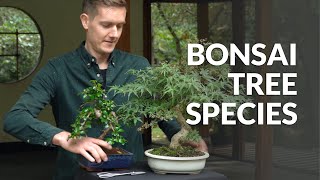Sophora Bonsai Care guidelines
Position your Sophora bonsai in a location that receives lots od sunlight, preferably in a spot with partial shade to protect it from intense midday sun. Ensure adequate airflow around the bonsai to promote healthy growth. Maintain temperatures between 60°F to 75°F (15°C to 24°C) and protect the bonsai from sudden temperature fluctuations and drafts.
Water your Sophora japonica bonsai thoroughly when the top inch of soil feels dry to the touch, ensuring even moisture throughout the root zone. Avoid overwatering, as excessive moisture can lead to root rot and fungal diseases. Use well-draining soil to prevent waterlogging, and adjust watering frequency based on environmental conditions and seasonal changes. Continue reading about watering Bonsai trees.
Watering
Free lecture from the Beginners CourseFeed your Sophora with a balanced, slow-release fertilizer during the growing season (spring through fall) to support healthy growth and flowering. Apply the fertilizer according to the manufacturer's recommendations, and avoid over-fertilization, which can lead to nutrient imbalances and leaf burn. Suspend fertilization during the dormant winter months to allow the bonsai to rest.
Prune your Sophora japonica regularly to maintain its desired shape and structure, removing dead, diseased, or overgrown branches with sharp scissors. Use wire to shape the branches of young bonsai trees, ensuring gentle manipulation to avoid damaging the delicate bark. Monitor the wiring carefully and remove it promptly to prevent wire scars. Continue reading about pruning Bonsai trees.
Repot your Sophora bonsai every two to three years during the early spring before the onset of new growth. Use a well-draining soil mix to promote root health and vigor. Prune the roots moderately to stimulate new growth. Continue reading about repotting Bonsai trees.
Propagate Sophora japonica through seeds, cuttings, or air layering for new plants. Collect seeds from mature pods and sow them in a well-draining soil mix, providing warmth and humidity to encourage germination. Alternatively, take semi-hardwood cuttings from healthy branches and root them in a suitable rooting medium. Consider air layering to propagate branches with desirable characteristics, promoting vigorous root development before transplanting.
Inspect your Sophora regularly for signs of pests such as aphids, scale insects, and caterpillars, which can infest the foliage and flowers. Treat infestations promptly with insecticidal soap or horticultural oil, or a stronger product sold in garden centers. Watch for symptoms of fungal diseases such as powdery mildew or leaf spot, and ensure proper airflow to minimize the risk of infection. For more detailed information on these techniques, check out our Bonsai tree care section.

Sophora japonica bonsai, or Japanese Pagoda Tree, by Foto proze
General information about the Sophora Bonsai tree
The Sophora japonica is often referred to as an indoor bonsai, as its a tropical tree species. Mind however that it needs lots of natural light - only a south facing window will suffice when kept indoors. The Sophora, or Japanese Pagoda bonsai, is from the Fabaceae family and is a deciduous tree. Its dark green foliage is arranged imparipinnate and up to a dozen leaflets. The tree flowers and grows fruits as well.
If you need help identifying your tree, take a look at our Bonsai tree identification guide.

